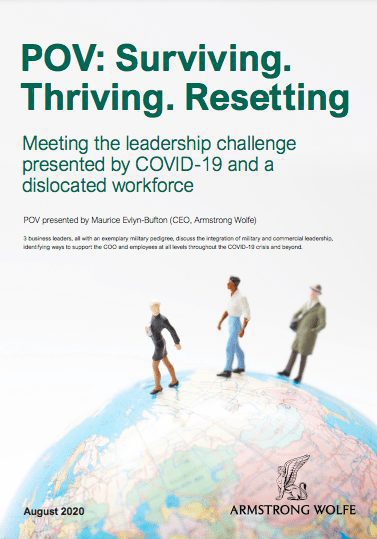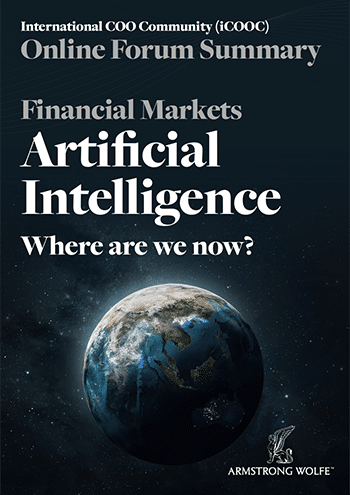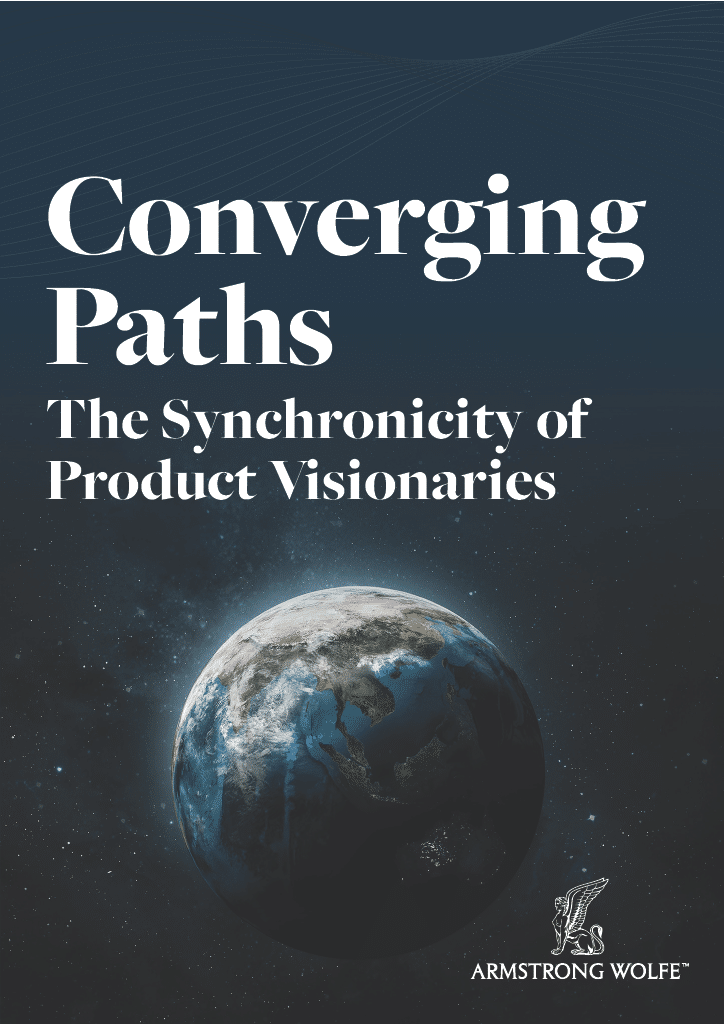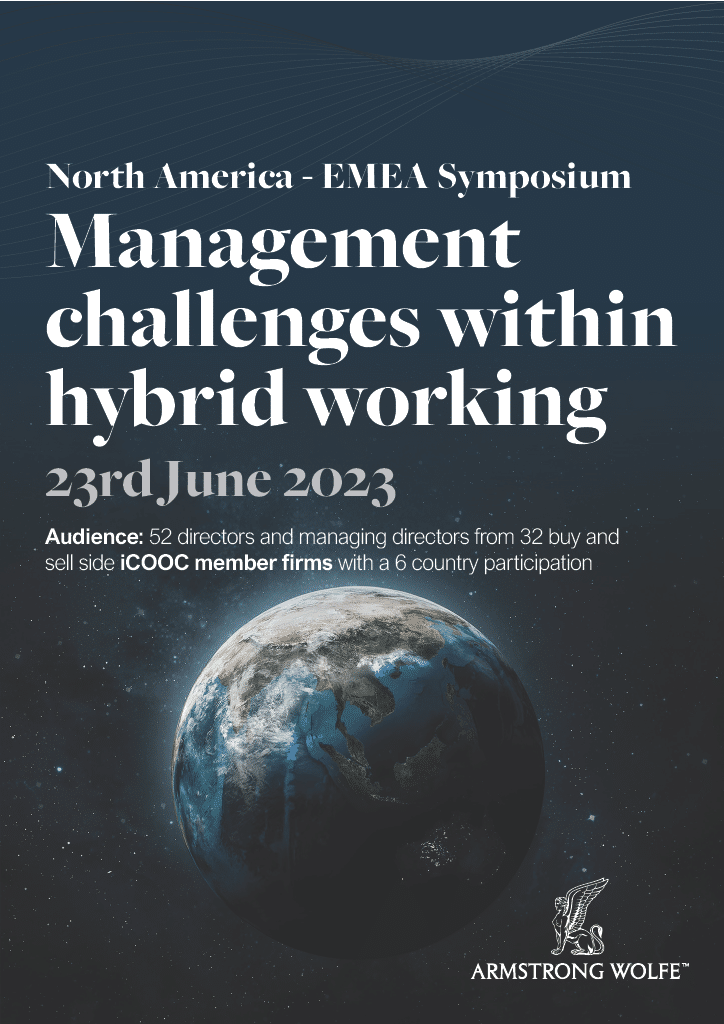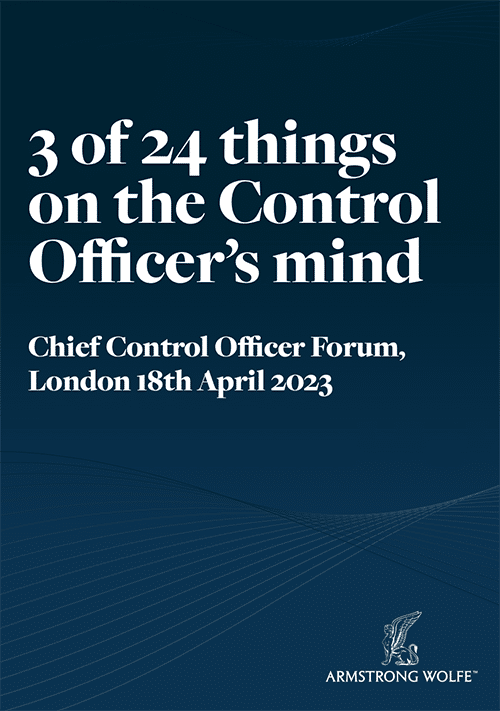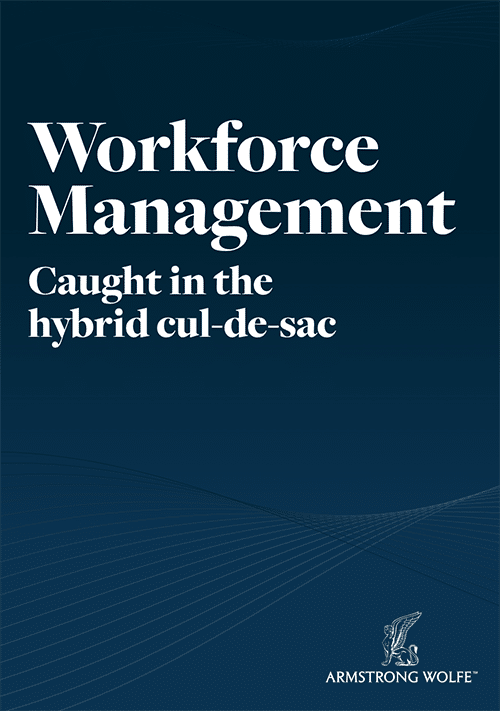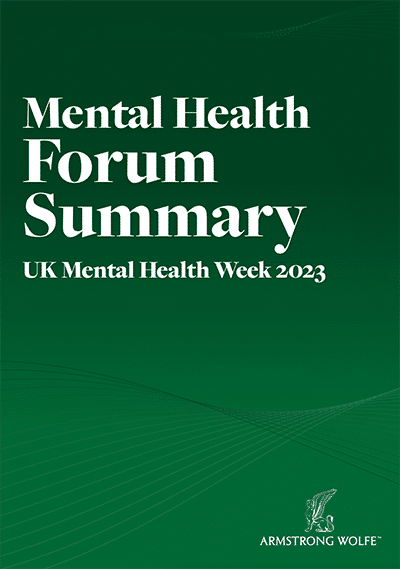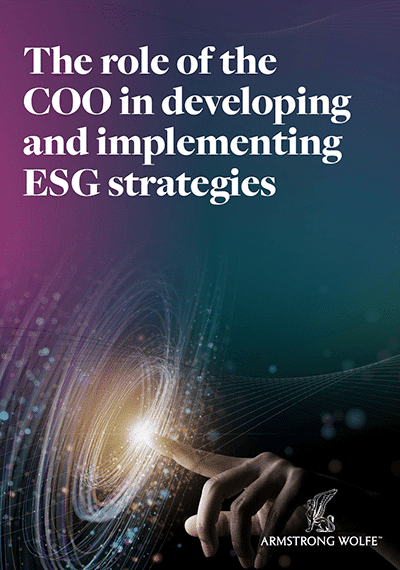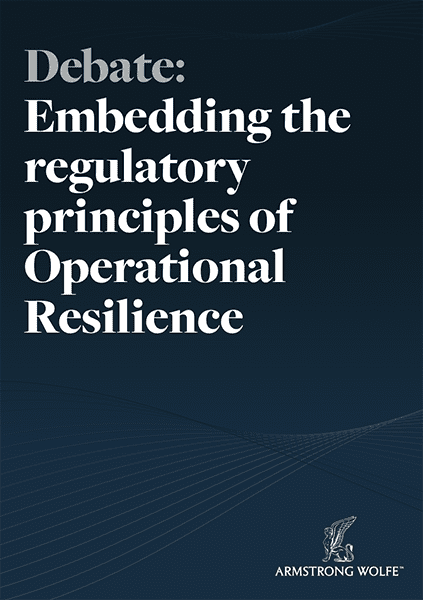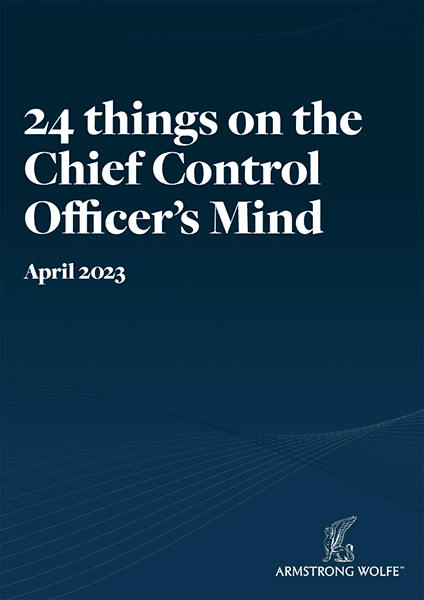In its simplest form leadership is a practical skill encompassing the ability of an individual or organization to “lead” or guide other individuals, teams, or entire organizations. The problem is that leadership is not that simple, and neither is a leader born. Leaders are made and if any organisation is to be successfully led, this is important to understand. Equally it is important for the individual to understand that whilst not proven in leadership or perhaps being questioned as to this capability, self-investment, and selfbelief in developing your leadership capabilities can pay dividend.
It is widely recognised that leadership is a set of skills that can be learned by training, perception, practice, and experience over time. Leadership learning is lifetime activity. Good leaders seek out development opportunities that will help them learn new skills. This is all to the good, but those that lead them must believe this too and back this belief in an investment in time and capital.
With the advent of the COVID-19 crisis, the economic impact, and the peculiarities of a change in the workforce distribution model, this is more important today across commerce, industry, and Financial Services than in 1, 2 even 3 generations.
It is also important to ensure the COO is tooled in effective leadership and acknowledges, embraces that whilst he/she invariably works for the CEO or business head, the COO role is an executive leadership position itself. Today it is a role arguably more visible than all others bar the CEO and one that touches daily all functions and in doing so, more people than any other. In the present crisis the COO role has been central to all efforts and will remain so. However, they like all need support, they like all, would benefit from leadership development: all leaders are made not born; it is a lifetime occupation set on self-improvement, in preparing yourself to be able to best meet tomorrow’s challenges.
Chris Severson (former TOPGUN F/A-18 Pilot) and now Head of the internal Transformation Office, Philip Morris International, has a wonderfully enriched career. From ‘having the privilege of leading some of the world’s greatest men and women’ as a TOPGUN pilot and instructor, Chris left the U.S. Marine Corps and post attending Columbia Business School, joined Barclays to design and lead a Conduct review. Laterally Chris joined Philip Morris, appointed to help lead its global transformation.
The commonality and thread throughout his career have been the ever present and imperative nature of needing effective and believable leadership. Leadership is in no small part based upon courage, not physical courage that may well play a part in the military but moral courage. Making the right decisions under pressure and with the interest of your people, be this an airman or women or colleagues and members of staff, being able to frame these decisions.
I sought out Chris’ views first of the panel of 3 as to the topic of debate: Surviving. Thriving. Resetting Meeting the leadership challenge presented by COVID-19 and a dislocated workforce.
Chris, not surprisingly, had his thoughts well organised and structured:
“My thoughts on outcomes from this discussion are pretty clear:
1. The burning platform is time: 12 to 18 months best case scenario to return to a normal that resembles the past. Therefore, it is not business continuity, it is how we adapt and excel in the current normal because we can’t simply close our eyes and hope for the best. Our employees and customers will have a say – the 2nd and 3rd order effects are not obvious yet, there will be many.
2. Culture: How to preserve? [I am not sure how much I believe corporate purpose will help here; my gut says this is much more about team(s) dynamics – small unit leadership – than corporate purpose]
Break it down into three pieces, each will require solutions – sure there are many other to consider. My sense from my current work is if you can solve the ‘fatigue / employee engagement’ challenge [every company is facing] you will have a winner.
1. Personal:
– Fatigue / employee engagement
– Communication (too much, not enough)
– Generational impacts, due to age and economic status
– Flight risk of top talent – it is a global marketplace now more than ever
2. Physical:
– Technology for WFH, employee experience working remote
– Lack of social engagement
– Obvious: safety of employees, etc.
3. Process: Move to distributed operations:
– Requires ‘leadership’ training at all levels, how to manage and work remote…, how do you make decisions, how do very senior leaders maintain a ‘smell of the place’] – Distributed operations require high levels of communication and collaboration, succinct direction, and clear objectives
– management traits many leaders lack
-Banking Conduct – I have been out of finance for a few years, yet, you know conduct risk grows as team culture fades, morale sinks and earning a quick Pound materializes.
The heuristic I often use in Philip Morris when trying to simplify our complex transformation execution is: structure, governance and attitude.
These three aspects will need to change in a COVID-19 world.
I also have been speaking internally of ADM Stockdale’s Paradox: https://www.jimcollins.com/media_topics/TheStockdaleParadox.html
Essentially, we need to prepare people to accept the reality we are now in for a long period of time yet have the optimism that this too will pass.”
Stuart Tootal listened with careful attention, gathering his thoughts, not to contradict Chris’ but to complement and indeed, compliment them. Stuart has a similarly impressive military career, being awarded the DSO for outstanding leadership when, as the Commanding Officer of the 3rd Battalion the Parachute Regiment, he led them on a brutally intensive tour of Afghanistan in 2006. Since leaving the Army 10 years ago, he joined Barclays and recently left to set up Matero Consulting. He is also a successful author of military history and has raised over GBP£3 million for his charity, The Afghan Trust, raising funds for those injured on operations from his former regiment.
Similarly, Stuart was structured and precise, when adding:
“Situational assessment of the issue:
The novelty and adrenalin of dispersing for survival at the initiation of lockdown in March has worn off, with the realisation of the perennial and multifaceted nature of the crisis over the cognitive bias for short-term interruption. With it has come the onset of fatigue, over communication (being Zoomed out), childcare issues, living at work, mental health issues and deprivation of physical variety and in-person interaction etc.
The sugar rush of self-congratulation of many for having pivoted at pace to WFH, is also ebbing. The claim of massively increased productivity not only has to be offset against the above, but also must be balanced against increasing error creep, lack of conduct supervision, different generational expectations, and inadequate management skills to deal with new circumstances. Microsoft and Harvard have both conducted recent studies that chart as many productivity negatives as positives.
The potential solution (framed from the discussion):
1. Management to leadership shift – one client said our mangers are screaming out for the tools to lead their people. Leadership improvement must be an all-levels business, although content and context may vary according to seniority.
2. Culture reset – this needs to extend beyond words statements, as culture is about actions, which equals behaviours. Both are about decisions, so it needs to be codified (give meaning in action terms and supported by tools; ultimately about decisionmaking).
3. Purpose – essential requirement for collectives when conditions are tough, and fear is a common stalker. Why am I doing this, what is my role, am I equipped and supported/empowered (material/moral and tech) to carry it out and what do I get from it?
The challenge and the opportunity – offering the tangible beyond the conceptual:
1. Many of us who served in the military get mission-command, we spent years learning about it and practicing it in a variety of different roles and fields. Corporates do not have the time or inclination to invest in getting familiar. There is no simple lift and drop.
2. What can transfer, must be properly identified, distilled, and translated to resonate; something I have learned from my limited corporate experience (10 years)and reinforced by doing just this for the last 12 or so months. The raw military example is not always the most compelling one; especially as misconceptions abound. The armed forces may be well respected, but they are not necessarily well understood, particularly in terms of what they can offer for business, so this must be deftly crafted and granular.
3. What is clear, is that people will need to step up and make decisions in ambiguous circumstances, where there is uncertainty, risk, and liability. What is clear is that many lack the mechanisms to do so and will be in uncharted territory. The military perspective is a powerful learning one but needs to be nuanced and tangible for people to get it and leverage it.
4. There is an opportunity to adapt and adjust significantly, to thrive and not just to survive. But it will require morale courage and an appetite for bold action, which may not be abundant. However, those who really get the imperative to change and have the minerals to really tilt at making a difference could get ahead of the competition”
There was a common theme running through the messaging, I thought, that leadership at all levels needed investment and belief in its worth. In the military you are taught to lead first and then you are taught to manage. In joining the British Army as an officer and at this stage, a potential leader, you attend The Royal Military Academy Sandhurst for 12 month leadership training, only after passing out from Sandhurst are you sent to your special at-arms training course, where you learn content and how to manage. It is a very similar principle that is followed in the U.S. when attending West Point. It underpins the fact that leadership can be imbued in an individual and a collection of individuals, that can then shape culture and define conduct. It is a characteristic if recognised, nurtured, and valued, can define success or failure for any company.
There remains the question of accountability, where the ultimate responsibility for the executive is to carry the burden of leadership, decision making and ‘the buck stops here’; to do so effectively any great leader must lead by example and in doing so, lead effectively
Richard Westley, Director of International Operations at The Inspirational Development |Group, headquartered at Sandhurst, who was himself awarded the Military Cross for his command tour in Bosnia in 1995, and the OBE for the command of his Battle Group in Afghanistan in 2007, noted:
“I believe that senior leaders now need to focus on absolute clarity in thought and word. Their guidance and intent needs to be understood fully throughout their organisations, and they must get used to testing this. They need to “walk the floor” allowing their people to engage with them and assure themselves that their messaging is getting to everyone. They might also benefit from revisiting their planning and decision-making cycles.
Whilst I cannot disagree with Stuart’s assertion that corporates may not understand the military, through IDG’s extensive work across commerce, we have found significant buy-in from clients to a five-stage process of decision making with involves:
• Understand
• Explore
• Decide
• Execute
• Review
With outputs:
• Problem or mission statement
• Options
• Plan
• Resolution
• Performance enhancement through review
I am, however like Chris and Stuart, convinced that any leadership programmes or training must occur throughout the organisation. Without emphasis from the Board it just will not work. Consistency from the leadership and clarity of purpose will be crucial if they want staff to make decisions on their behalf.”
The case for investment in leadership is compelling but this case has always been there. It is a question, as we run towards the half-year point of the crisis, what companies and their executive will see this investment as needed, indeed as an imperative to help steer their businesses through unchartered waters?
I asked a global COO post the second panel session “Leading up to the two leadership panels (with Chris, Stuart and Richard), we have been working closely with Matero and IDG in developing training modules, set against the back drop to both panel sessions and focused on providing leadership training that leverages the lessons learnt from the military (when leading in a crisis). Do you feel there is an appetite or willingness to spend money on qualitative training at this stage or are we singing to the wrong crowd?”
The COO replied “I believe there is, but the timing may be a challenge with companies looking at ‘cost saves’ and ‘efficiencies’ presently. I personally think it needs firms to look at the ‘bigger picture’ and ‘longer term’ picture, as I fear that the approach at present is somewhat ‘penny focused’ and ‘investment’ requires people with the ability to look beyond the ‘costs’ to the ‘benefits’ and advantage it could give them. Any investment in leadership training is not limited to a return in the short term, where it is momentarily needed, but in the mid to long term. It will be interesting to see if my thoughts and demands land favorably internally.”
“Likewise, the market as a whole” I thought and opened the discussion to Gordon Grant, Armstrong Wolfe Partners’ Head of Human Capital Management, who concurred with the above and noted the prevalence of this thematic in client engagements.
“Distributed leadership is critical to the pillars that successful financial institutions rely upon. For example, Agile and design led development – the ability of an organization to harness intellectual power, to mobilize quickly in response to client and business needs, to pivot and to seize opportunity, is dependent on distributed leadership. Legacy models of centralized control and command do not work. Not only are they slow, they divert resources from testing and product evolution to inefficient management briefings and deck creation.
Governance and control are required, but stagnation through over-engineered Steering is not. Instead, success has shifted to exquisite execution, at pace, engineered by teams corralled around a common understanding of governing principles. The same is evident in how the most successful banks govern and manage risk. It is not possible for a central team to call the shots on every variable that takes place in globally matrixed business lines. Embedded distributed leadership and leading with intent is essential to proficient risk mitigation plus adherence to Culture and Conduct in this time of accelerating threat management.”
We await the industry’s evaluation as to how it values leadership training and in doing so, recognizing leaders are not born, they are delivered through investment and a belief in this investment as a vehicle to a unqualifiable return on investment.
If you are interested in talking to Armstrong Wolfe about its bespoke and unique leadership training developed from its understanding of the markets and the role of the COO, supported by Matero Consulting and IDG, please contact:
for other enquiries contact
www.armstrongwolfe.com

